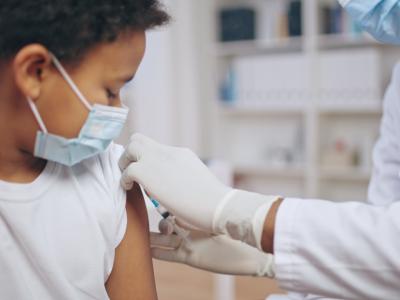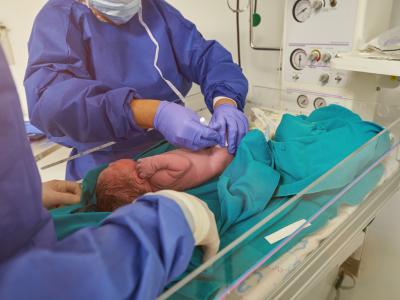Louisiana becomes 29th state to confirm CWD after deer tests positive
Chronic wasting disease (CWD) has been confirmed for the first time in Louisiana, the Louisiana Department of Wildlife and Fisheries (LDWF) said late last week.
The fatal prion disease was detected in an emaciated white-tail buck harvested by a hunter in Tensas Parish, across the border from where the diseases was detected in 2018 in Mississippi, and again during the 2021-22 hunting season. The number of CWD-affected states is now 29, following the first detection of the disease last month in Alabama.
The LDWF first reported a positive finding in the Tensas Parish deer on Feb 2, and after confirmation of CWD by the National Veterinary Services Laboratory in Ames, Iowa, the department announced a feeding and carcass-export ban on deer in Tensas, Franklin, and Madison parishes on Feb 4. The ban took effect today.
"This is what we have feared," said LDWF Secretary Jack Montoucet in the Feb 2 news release. "We will count on the diligence of our hunters, property owners, deer processors, and taxidermists in monitoring and helping to control the spread of CWD."
Referring to the ban on supplemental feeding, including mineral or salt licks, and on exporting deer carcasses, Montoucet added in a Feb 4 news release, "This is the best option that we have at this time. We will provide updates on our response in the coming months."
CWD has also been detected in four Canadian provinces and can infect other cervids as well, such as moose and elk. CWD-infected deer may show signs of weight loss, excess salivation, frequent drinking and urination, coordination problems, and a lack of fear of people.
CWD has yet to be detected in people, but the Centers for Disease Control and Prevention (CDC) warns against eating cervid meat that tests positive for the disease.
Feb 2 LDWF news release
Feb 4 LDWF news release
H5N1 avian flu infects more US waterfowl, strikes Canadian turkey farm
The US Department of Agriculture (USDA) has reported 87 more highly pathogenic H5 or H5N1 avian flu detections in hunter-harvested birds on the East Coast that were tested as part of surveillance efforts. In a related development, Canada—which has reported recent similar detections—confirmed the first outbreak involving the Eurasian strain at a commercial farm.
In the middle of January, the USDA Animal and Plant Health Inspection Service (APHIS) had reported three H5N1 detections involving hunter-harvested waterfowl in North Carolina and South Carolina.
The 87 new reports include two detections in Palm Beach County in Florida, but most involve detections in the Carolinas, including several more from Colleton County in South Carolina and reports from three more counties in North Carolina: Beaufort, Bladen, and Pamlico.
The reports also include two detections in Virginia's Henrico County, previously reported by Virginia officials, as well as a detection from Virginia Beach.
All of the locations are on the Atlantic Flyway for migratory birds.
APHIS said though it's not unusual to detect avian flu in wild birds, which can spread the virus without symptoms, the recent Eurasian H5 detections serve as a warning for poultry owners in the United States to step up their biosecurity practices. Eurasian H5 outbreaks this winter have caused major poultry losses, especially in Europe.
USDA APHIS high-path avian flu page
Feb 2 CIDRAP News scan on earlier Virginia detections
Canada's H5N1 outbreak occurred at a commercial turkey farm in the western part of Nova Scotia, according to a notification from the World Organization for Animal Health (OIE).
The outbreak began on Jan 30, killing 6,146 of 11,800 susceptible birds. Officials said the virus is similar to the strain recently detected in waterfowl and other birds in Newfoundland and Nova Scotia and is of the same lineage circulating in European birds.
Feb 4 OIE report on H5N1 in Canada
Study finds high rates of antimicrobial resistance in Benin hospital
A study of blood cultures collected at a semi-rural hospital in Benin found unexpectedly high rates of antimicrobial resistance (AMR) among gram-negative bacteria, researchers reported last week in BMC Infectious Diseases.
From October 2017 to February 2020, 3,140 blood cultures were collected from 3,082 suspected bloodstream infection (BSI) episodes at Boko Hospital, a secondary hospital in Benin, and a nearby university hospital. Isolates retrieved from the blood cultures were processed locally and later shipped to Belgium for reference identification and antimicrobial susceptibility testing. Most of the cultures (78.7%) were from children under 15 years of age.
Pathogens were recovered from 383 blood cultures (12.4%), corresponding to 381 confirmed BSIs. The most common pathogens were Klebsiella pneumoniae (15.6%), Salmonella Typhi (15.3%) and Staphylococcus aureus (13.5%). AMR rates were high among Enterobacterales, with resistance to third-generation cephalosporins found in 77.6% of K pneumoniae isolates, 12.8% of Escherichia coli isolates, and 70.5% of Enterobacter cloacae isolates. Carbapenemase production was detected in two E coli and two E cloacae isolates, all of which were of the New Delhi metallo-beta lactamase type. Methicillin resistance was present in 22.4% of S aureus isolates.
The study authors say the findings highlight the feasibility and importance of having clinical bacteriology laboratories at secondary hospitals in low- and middle-income countries (LMICs), particularly those in sub-Saharan Africa, where AMR data are scarce.
"Unbiased estimates for AMR are difficult to obtain in LMIC, but our experiences highlight the potential for surveillance of AMR in the community through strengthening of clinical microbiology laboratories in remote, non-tertiary settings," they wrote.
Feb 3 BMC Infect Dis abstract













